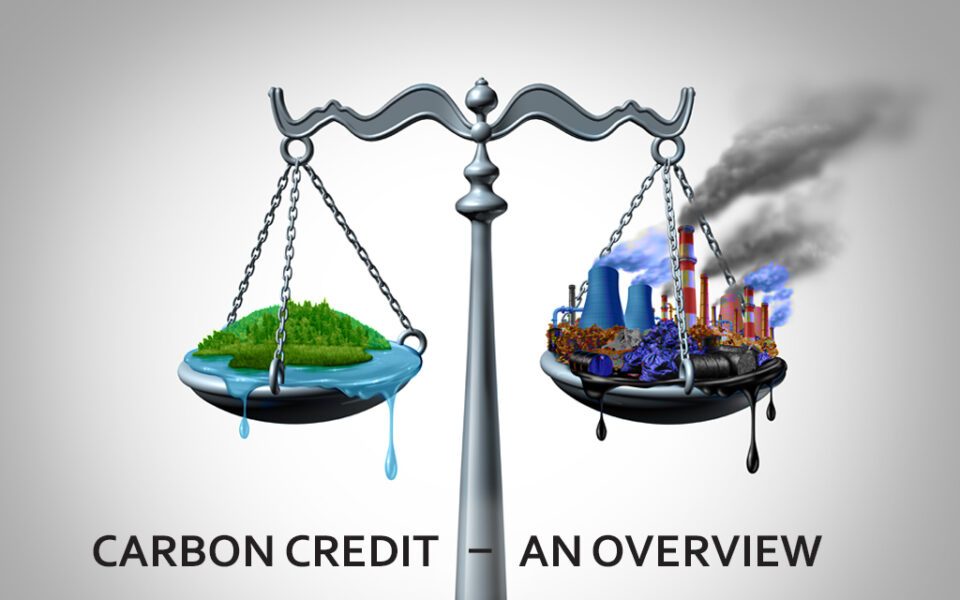Carbon Credit – An Overview

What is a Carbon Credit?
One carbon credit is equivalent to one metric ton of carbon dioxide, or in certain business sectors, carbon dioxide equivalent gases (CO2-eq), and are traded through global intermediaries, online retailers, and trading stages. Organizations that find it challenging to comply with the carbon discharge conditions can buy carbon credits to counterbalance their outflows by making finance promptly accessible to environmentally friendly power projects, forestation, and projects related to reforestation all around the globe.
Projects which sell carbon credits incorporate breeze, sun-oriented, geothermal, and biomass which replace petroleum-powered plants. Counterbalancing one metric ton of carbon intends that there will be one less metric ton of carbon dioxide in the climate than otherwise would have been.
Types of Carbon Credits:
There are two types of credits:
- Voluntary Emissions Reduction (VER): A carbon offset that is traded in the over-the-counter or voluntary market for credits.
- Certified Emissions Reduction (CER): Emission units (or credits) made through an administrative system fully intent on neutralizing emissions from a project. The primary distinction between the two is that there is an outside party guaranteeing body that controls the CER rather than the VER.
Trading Credits
Despite the fact that carbon credits are useful to society, it is difficult for a normal financial backer to begin involving them as venture vehicles. The certified emissions reductions decreases (CERs) are the only product that can be utilized as investments in the credits. In any case, CERs are sold by unique carbon reserves laid out by big financial institutions. The carbon funds give the opportunity for small investors to enter the market.
Carbon credits can be exchanged in both private and public business sectors. Current standards of exchanging permit allow the global exchange of credits. The pricing of credits are fundamentally determined by the degrees of the organic market in the business sectors. Because of the distinctions in the organic market in various nations, the costs of the credits vary.
There are special exchanges that specialize in the trading of the credits, including the European Climate Exchange, the NASDAQ OMX Commodities Europe exchange, and the European Energy Exchange.
Besides that, there are special exchanges that are made to specialize in the trading of the credits, including the European Climate Exchange, the NASDAQ OMX Commodities Europe Exchange, and the European Energy Exchange.
What is a Carbon Offset?
As the name suggests, a carbon offset addresses a genuine decrease of carbon dioxide in the environment and results in generating carbon credit. The main difference is that the credit is produced as the consequence of an undertaking with clear limits, title, project archives, and a check plan
Generally speaking, carbon counterbalances decreases outside of the association and, all the more critically, outside of any administrative conditions.s
